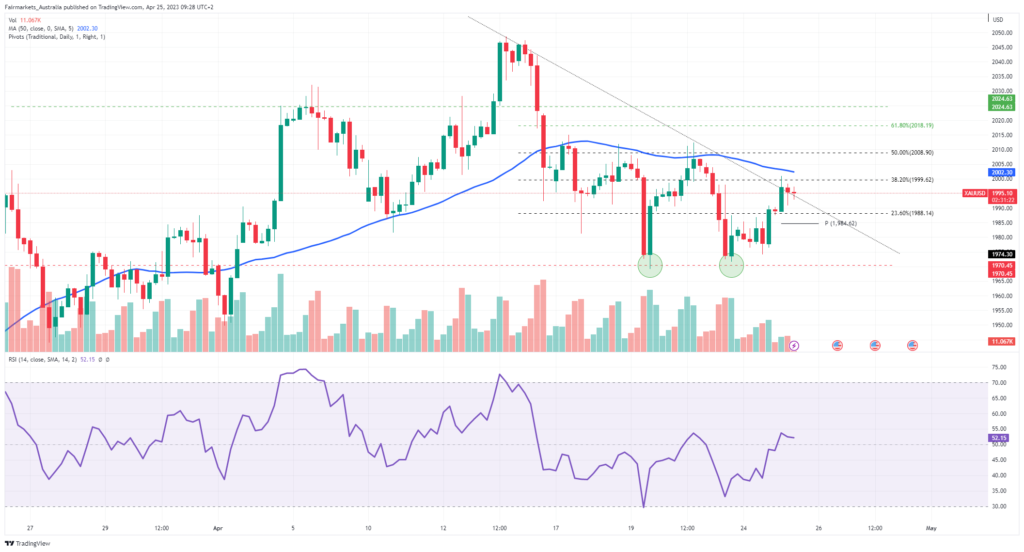The gold spot price (XAUUSD) traded up in the Tuesday Asian session, aided by a weaker US dollar, as traders started pricing in increased bets around a potential rate cut from the Federal Reserve later this year. With several earnings releases and US economic data due later this week, the spot price could be in for some directional moves.
On Thursday, the US releases their quarterly GDP growth statistics, while the Core PCE Index is due on Friday, giving traders further insights into the inflationary environment. Although there is a firm expectation of a 25bps hike in the May meeting, traders will look further to bet on when the policy pivot will occur.
Technical
The 4H chart shows support and resistance at $1,970.45 and $2,024.63 per ounce, respectively. The spot price is expected to consolidate within this range until further clarity about the monetary policy outlook becomes available. However, a downtrend is evident in a shorter timeframe, with the bulls threatening to break above the trend.
The 38.2% Fibonacci retracement at $1,999.62 per ounce from the 19th of April’s bottom has come into focus if the bulls break above the downtrend. From there, buying pressure could shift the spot price toward the Fibonacci midpoint at $2,008.90 per ounce if the GDP and PCE data support a Federal Reserve policy pivot later this year. Depending on the magnitude of the data surprise, the Fibonacci golden retracement ratio at $2,018.19 per ounce could become topical.
On the other hand, if the data supports further rate hikes after the May meeting, the downtrend resistance could hold to shift the spot price back to $1,988.14 per ounce, the 23.6% Fibonacci retracement level. A sustainable breakdown of this level could bring the daily pivot support at $1,984.62 per ounce into play before the bears reach the neckline at $1,970.45 per ounce.

Summary
The spot price could consolidate in anticipation of the data releases later this week. Traders could monitor future developments in the Federal Reserve’s monetary policy to position themselves for the following directional price action.
Sources: Koyfin, Tradingview


